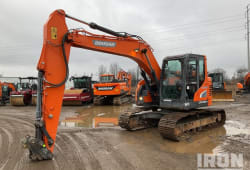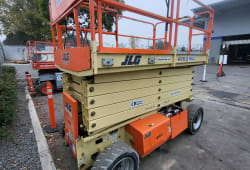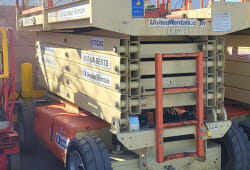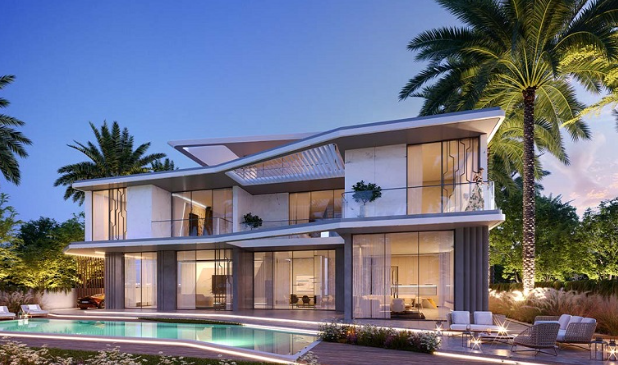New Construction Duplex: Costs, Pros & What to Expect in 2025
4 Min read
)
July 29, 2025
If you're considering building a new construction duplex, you're not alone. In 2025, duplex homes continue to gain popularity for investors, first-time homeowners, and multigenerational families alike. Whether you're seeking rental income, a lower-cost entry into homeownership, or a shared living setup, duplex new construction can offer a smart and flexible solution.
In this guide, we'll break down everything you need to know-from the cost to build a duplex to the pros and cons of duplex construction-so you can make an informed decision.
What Is a New Construction Duplex?
A duplex is a residential building divided into two separate units, each with its own entrance, living space, kitchen, and bathroom(s). These units can be side-by-side or stacked one over the other.
A new construction duplex refers to a newly built duplex property, not renovated or repurposed from an older structure. It offers the latest features, energy efficiency, and modern layouts tailored to today’s living standards.
Pro Tip: Duplexes are considered multi-family properties but can be financed with residential loans in most cases.
Why Consider Duplex New Construction in 2025?
:format(webp))
The rise in housing demand, limited inventory, and soaring rental rates are making duplex new construction projects more appealing than ever. Here’s why:
Built-in rental income: Live in one unit, rent the other.
Affordability: Shared walls and land reduce overall costs.
Design flexibility: You can customize both units or mirror the design for efficiency.
High resale value: Duplexes tend to retain strong market value in both urban and suburban areas.
Cost to Build a Duplex in 2025
So, how much does it cost to build a duplex today?
The average cost to build a duplex in the U.S. in 2025 ranges from $110 to $185 per square foot, depending on location, size, design complexity, and material choices.
Average Duplex Construction Costs (per unit):
Key factors that influence cost:
Land acquisition and zoning
Foundation and site prep
Construction labor and material costs
HVAC, plumbing, electrical systems
Permit fees and inspections
Don’t forget soft costs like architectural design, permits, landscaping, and utility hookups, which can add 15-25% to your budget.
Pros and Cons of Duplex Construction
Before you jump into building a new construction duplex, consider these advantages and drawbacks.
Pros:
Rental income potential - Offset your mortgage by renting one unit.
Efficient land use - Great for high-density urban areas.
Lower per-unit cost - More affordable than building two separate homes.
Multigenerational living - Keep family close while maintaining privacy.
Tax benefits - You may be eligible for depreciation and deductions on the rental unit.
Cons:
Rental income potential - Offset your mortgage by renting one unit.
Zoning and permits - Not all lots allow duplex construction.
Privacy concerns - Noise or shared walls may be an issue for some.
Higher upfront investment - Compared to a single-family home.
Management responsibilities - If you rent out a unit, you become a landlord.
Tip: Always consult local zoning laws and a professional builder before starting your project.
Steps to Build a New Construction Duplex
Building a duplex requires thoughtful planning. Here’s a simplified overview of the process:
Find a suitable lot (zoned for multi-family use).
Hire an architect or builder experienced in duplex design.
Create a duplex layout based on your needs (side-by-side or stacked).
Secure financing (construction loan, FHA, or conventional).
Apply for permits through your city or county.
Begin construction -includes foundation, framing, systems, and finishing.
Final inspections & occupancy certificates.
Financing Options for Duplex New Construction
There are multiple financing options available for duplex projects, depending on your goals.
Owner-occupied loan - FHA or VA loans allow you to live in one unit and rent the other.
Investment property loan - Conventional financing with 15-25% down payment.
Construction loan - Short-term financing that converts to a mortgage after completion.
Be sure to compare lenders and understand your long-term cash flow strategy.
Final Tips Before You Build
Work with professionals: Builders, architects, and real estate agents familiar with duplex construction.
Think long-term: Will you live in one unit, rent both, or sell later?
Budget wisely: Plan for contingencies and soft costs.
Design with resale in mind: Energy efficiency, modern layouts, and curb appeal matter.
Conclusion
A new construction duplex offers a unique opportunity to build equity, generate income, and provide flexible living arrangements. While there are upfront challenges and decisions to make, understanding the cost to build a duplex and the pros and cons of duplex construction can guide your journey toward a smart investment.
Ready to start your duplex project? Talk to a local builder today and explore what’s possible!

Caleb Woods is an experienced content specialist and an editor at Boom & Bucket, blending his journalism background with expertise in the heavy equipment industry. He delivers engaging, informative content to help professionals stay informed and make smarter decisions in the machinery market.














